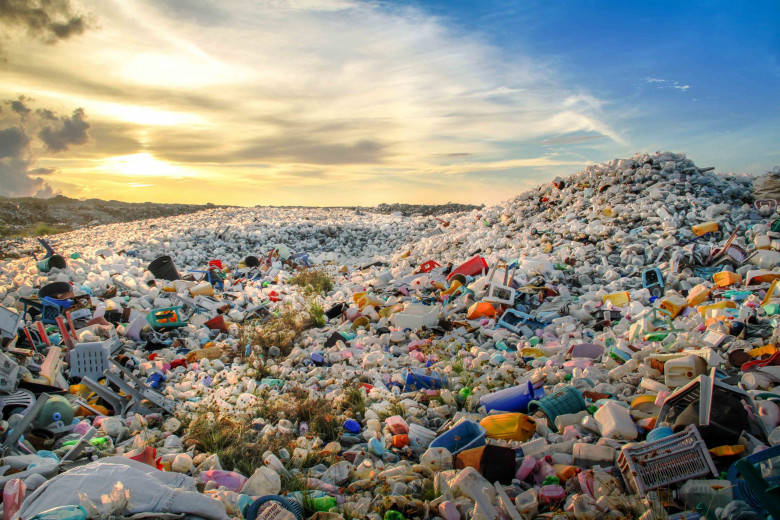views

Introduction
The Netherlands Waste Management Market has long been a leader in sustainable waste management and circular economy initiatives, continuously seeking innovative solutions to reduce environmental impact. With landfill space limited and a strong focus on waste-to-energy (WTE) solutions, the country has embraced Carbon Capture and Storage (CCS) technology to mitigate CO₂ emissions from waste incineration.
As a result, CO₂ capture in the Netherlands’ waste management sector is becoming a crucial strategy for achieving carbon neutrality goals. One of the most notable projects is led by AEB Amsterdam, a company at the forefront of implementing waste-to-energy carbon capture technology.
Netherlands’ Waste-to-Energy Landscape: A Quick Overview
Why Waste-to-Energy (WTE) Matters
The Netherlands has a highly efficient waste management system, emphasizing recycling, resource recovery, and waste-to-energy conversion. With stringent landfill bans, approximately 80% of household waste is either recycled or incinerated for energy production.
How WTE Works:
· Waste is incinerated at high temperatures.
· The heat generated is used to produce electricity and district heating.
· Non-recyclable waste is converted into a valuable energy source, reducing reliance on fossil fuels.
However, traditional waste incineration releases significant CO₂ emissions, making carbon capture and storage (CCS) a critical addition to the Netherlands’ sustainability strategy.
CO₂ Capture from Waste Incineration: How It Works
What Is Carbon Capture and Storage (CCS)?
CCS is a process that captures CO₂ emissions from industrial sources and prevents them from being released into the atmosphere. In waste incineration, CCS involves:
Capturing CO₂ from the flue gases emitted during waste combustion.
Transporting the captured CO₂ via pipelines or ships.
Storing CO₂ underground in depleted gas fields or using it for industrial applications.
By integrating CCS in WTE plants, the Netherlands is significantly reducing its carbon footprint while maintaining energy production.
Other Carbon Capture Initiatives in the Netherlands
1. AVR Duiven’s CCS Waste Incineration Project
AVR Duiven, another major WTE facility in the Netherlands, has implemented CCS technology to capture 60,000 tonnes of CO₂ annually. This CO₂ is:
Sold to Dutch greenhouses, where it boosts plant growth.
Used in industrial processes, replacing fossil-based CO₂ sources.
Reducing the facility’s carbon footprint by 30%.
2. Porthos: Large-Scale CO₂ Storage Project in Rotterdam
Porthos (Port of Rotterdam CO₂ Transport Hub and Storage) is a multi-industry CCS project, storing CO₂ in depleted North Sea gas fields.
Several waste-to-energy and industrial plants will contribute captured CO₂ to Porthos, helping the Netherlands cut emissions across multiple sectors.
Why It’s Important:
The project will store 2.5 million tonnes of CO₂ annually.
It will support waste-to-energy companies in achieving carbon-neutral incineration.
The Future of Waste-to-Energy Carbon Capture in the Netherlands
1. Expansion of CCS Technology
As CO₂ capture Netherlands initiatives gain momentum, more WTE plants will integrate carbon capture to:
✔ Reduce overall carbon emissions from waste incineration.
✔ Maintain waste-to-energy as a viable, sustainable energy source.
✔ Meet the Netherlands’ climate goals under the Paris Agreement.
2. Integration with Hydrogen Production
Some WTE plants are exploring Carbon Capture and Utilization (CCU) to produce clean hydrogen:
✔ Captured CO₂ can be combined with hydrogen to create synthetic fuels.
✔ This reduces the demand for fossil-based hydrogen production.
3. AI-Powered Efficiency in Carbon Capture
AI-driven systems are being developed to:
✔ Optimize CO₂ capture efficiency, making the process cheaper and faster.
✔ Monitor carbon capture rates in real-time.
✔ Improve energy efficiency in WTE operations.
4. Policy and Investment Support
The Dutch government is investing €2 billion in CCS projects, offering:
Financial incentives for WTE plants adopting CCS.
Stricter emissions regulations, pushing companies toward carbon-neutral technologies.
Public-private partnerships to accelerate CCS adoption.
Conclusion
The Netherlands is leading the way in waste-to-energy carbon capture, setting an example for the world in sustainable waste management. Through pioneering initiatives like AEB Amsterdam’s CCS project and the Porthos CO₂ storage hub, the country is proving that waste incineration can be both energy-efficient and climate-friendly.
As carbon capture technology evolves, AI-driven optimization, industrial CO₂ utilization, and large-scale storage solutions will make CCS an integral part of achieving a zero-emissions future. With continued innovation and government backing, the Netherlands is on track to revolutionize the global waste-to-energy industry, making it a cornerstone of the circular economy and carbon-neutral energy production.






















Comments
0 comment